Automation Trends To Watch In 2021
The COVID-19 pandemic made everyone question their business models. A majority of organizations weren’t equipped to face the challenges brought on by the pandemic, such as remote working. However, with time, businesses started to control the situation by leveraging automation technologies, artificial intelligence, and machine learning tools. As a result, we see the following automation trends around the world.
Hyperautomation to Become Inevitable in the Market
For the past couple of years, Hyperautomation has been gaining a lot of attention. It is an advanced type of automation that completes processes and tasks at increased speed, with fewer errors, and it does so by combining automation tools with several packaged software and machine learning applications. Based on the current data, we predict that automation's scope will shift towards automating knowledge work from rigid and static rule-based distinct transactions and tasks. However, this will require a new automation strategy focused on digital process optimization from IT infrastructure using customer-facing applications. Hyperautomation brings integration, management, monitoring, and DevOps together on the same page allowing a full life-cycle of automated processes and enables businesses to automate end-to-end workflows managing complex support across different platforms.
Hybrid Digital Infrastructure Management
The practice of assessing and monitoring all the IT infrastructure, including networks, servers, and storage within an organization, is called Hybrid Digital Infrastructure Management (HDIM). As IT systems are becoming increasingly complex, a platform that allows the management of workloads, resources, and processes across distributed and diverse environments is becoming integral for IT teams. By the end of next year, around 20% of enterprises will use HDIM systems to some extent for optimizing workload over the edge, on-premises, and cloud environments.
Acceleration of Collaborative Automation
The collaboration between humans and robots at the workplace is inevitable in the future, and in 2021, we’ll see a rise in collaborative automation. Humans will work together with automation technologies, computers, and software. Artificial Intelligence (AI) has already become a part of our daily lives, and unlike the concerns of some people, it is not here to take over humans. Sure, intelligent automation has the potential to replace humans, but that’s not the intent of it; it is supposed to improve the way humans work. So in this context, companies will implement the highest levels of automation technologies to perform repetitive work and menial tasks to free up employees to focus on more integral tasks.
Heightened Adoption of Automation
Due to the alleged human replacement factor, automation wasn’t the priority of the leaders. Due to the COVID outbreak, however, things have changed. Business and leaders are now more inclined towards integrating automation technologies to prevent the business processes from collapsing. Due to disrupted business workflows and the cash crunch it creates, companies worldwide are laying off employees in large numbers. To prevent further damage, businesses are turning towards automation tools and process automation to ensure business continuity. A more hostile demand for automating the business process will erupt in 2021 as countries and organizations grappling from an economic downturn are looking for a solution to alleviate themselves from this uncertainty.
Democratization of Automation
Automation technologies like robotic process automation (RPA), machine learning (ML), and artificial intelligence (AI) were already becoming important, but due to the pandemic, they became essential. In 2021, we’ll see the digital transformation at its peak as the concept of democratization of automation is becoming a reality. Effective automation strategies need extensive human support and participation, so with democratization, companies will be able to empower non-tech users and automate mundane tasks. Every new approach has its own set of challenges, and automation’s democratization is no exception. Businesses, however, can address these challenges by developing and implementing a systematic automation strategy.
Automation Fragmentation
The automation market is becoming increasingly fragmented due to the escalating numbers of vendors providing automation solutions. Although this provides a broader choice for the people, it also creates challenges for choosing the right automation tools. This creates more frustration and confusion for businesses seeking to improve their automation coverage or invest in new tools. So it is indispensable for businesses to implement a bulletproof automation strategy to navigate this challenge and choose the right automation tools according to their business needs.
The Arrival of Intelligent Process Automation (IPA)
Businesses were already benefiting from artificial intelligence (AI) capabilities, but in 2021, they’ll experience the full benefits. Using AI, this new capability will significantly patch the robotic process automation (RPA) called Intelligent Process Automation (IPA). Which is a collection of different technologies that work collaboratively to automate, integrate, and manage digital processes. It also combines fundamental process redesign and machine learning with RPA, enabling it to improve and learn over time. In 2021, the RPA adoption will grow significantly, and the IPA market will become even more viable. According to estimates, in a short span of five years, IPA investments and investments in other similar automation technologies will reach $232 billion, and a large scale adoption is expected across several industries.
New AI-Influenced Robotics Applications
AI-based solutions were already making headway into manufacturing and automation. In 2021, AI will significantly reduce failure and mechanical issues by analyzing data and sniffing out patterns using advanced sensor technology and more connected systems. The analyzed data will serve as fuel for predictive applications that use AI to detect patterns and direct a robot about required maintenance. Such applications can automatically alert and guide engineers about the steps they need to take to repair a piece of equipment before breaking down, saving businesses from costly downtime.
Growth of Cloud Automation
Process automation may seem like it’s only about technology, but it is actually more about digital transformation strategy. Organizations moving towards cloud-based data centers for data management can use cloud automation as it is the best choice for them. Organizations can enhance employee experience by easily accessing the data from cloud infrastructures using a cloud automation system. Cloud automation requires specialized tools and expertise as it is not built directly into the cloud. This automation technology is publically available from vendors including Azure, AWS, etc.
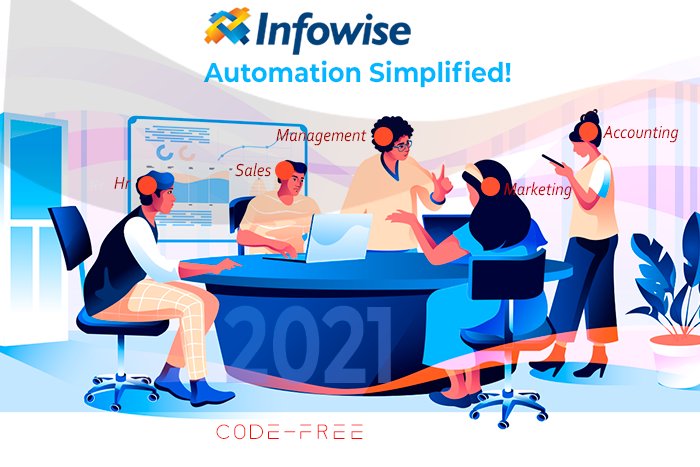
Infowise
Infowise has been providing automated business solutions for almost two decades. These solutions are easy to deploy; they require minimal training and can be customized and up-scaled according to your business needs. With Infowise, you can create your own customized solutions without writing a single line of code all through your web browser. You can automate multiple business processes, including task assignment, list generation, form creation, alerts, calendars, etc. To learn more about our business processes and workflow automation solutions, download the free trial or request a free demo.
Add your comment
Flexible Forms
Convenient responsive modern forms, featuring tabs, section and column permissions, dynamic rules, repeating sections, electronic signatures and input validation, while keeping all your data safely inside SharePoint.
Smart dynamic SharePoint forms provide an exceptional user experience, improve data quality and simplify business processes, saving you valuable resources.
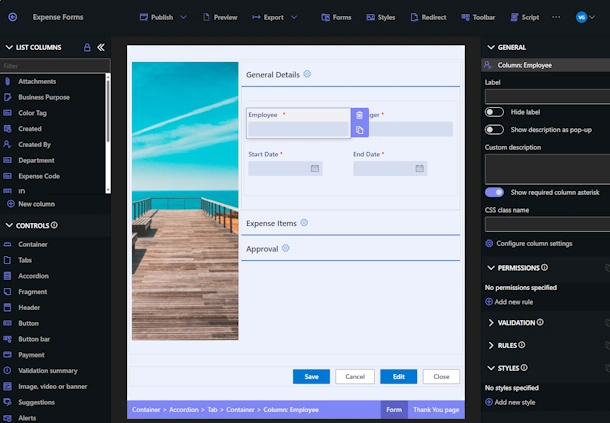
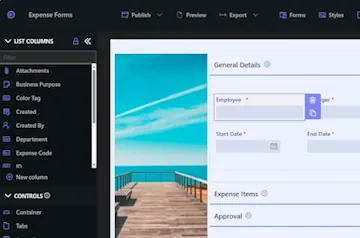
Intuitive Automation
Replace complex SharePoint and Power Automate workflows with simple, but versatile Actions to create and update data inside SharePoint and in a variety of integrated applications, such as Exchange, MS SQL, Teams and many more.
By reducing the learning curve, you empower more people in your organization to create and manage business solutions, successfully removing bottlenecks.
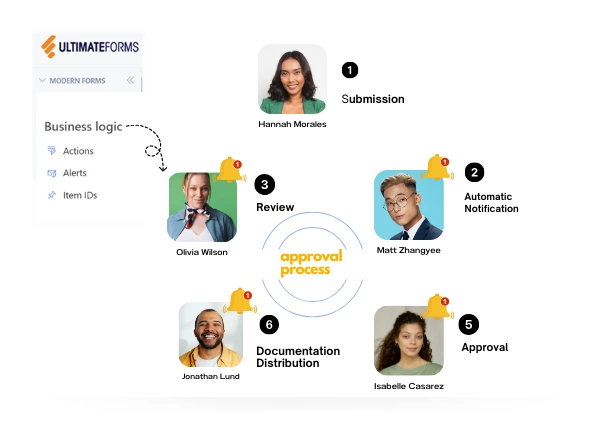
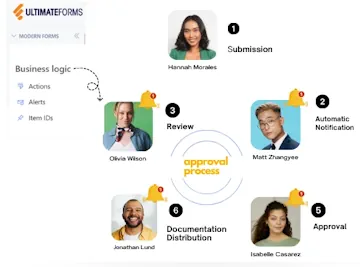
Clear Reporting
Present data as actionable insights with detailed shareable reports, dashboards, KPIs, calendars and charts.
Everyone is able to visualize information in an accessible fashion, improving responsiveness and accountability.
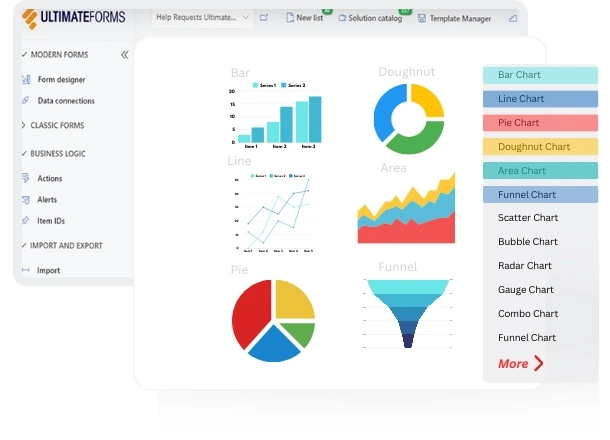
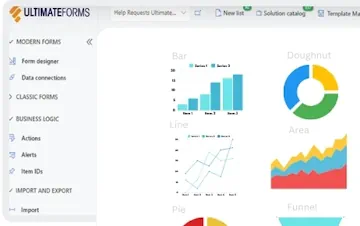
100’s of Templates



